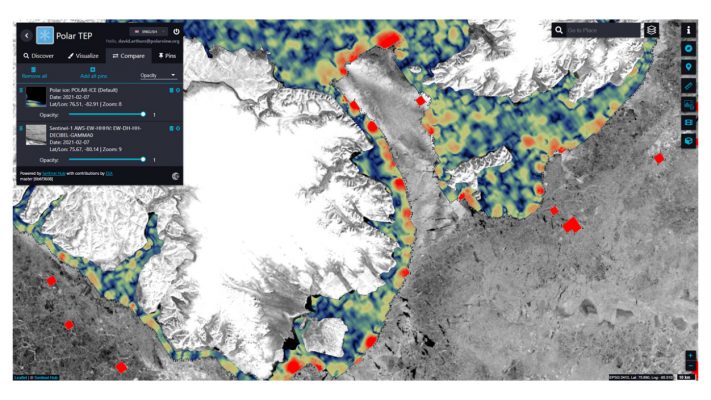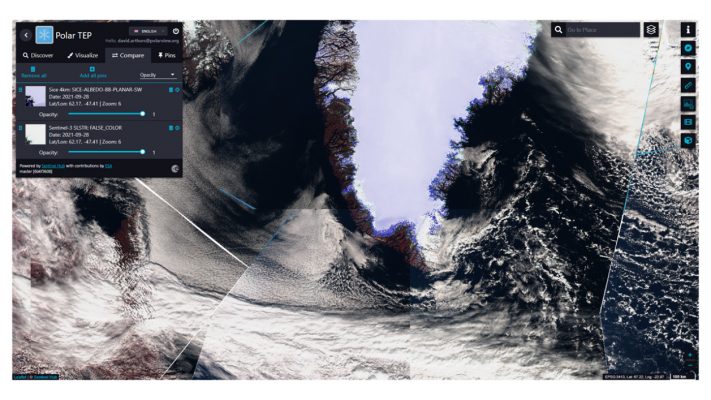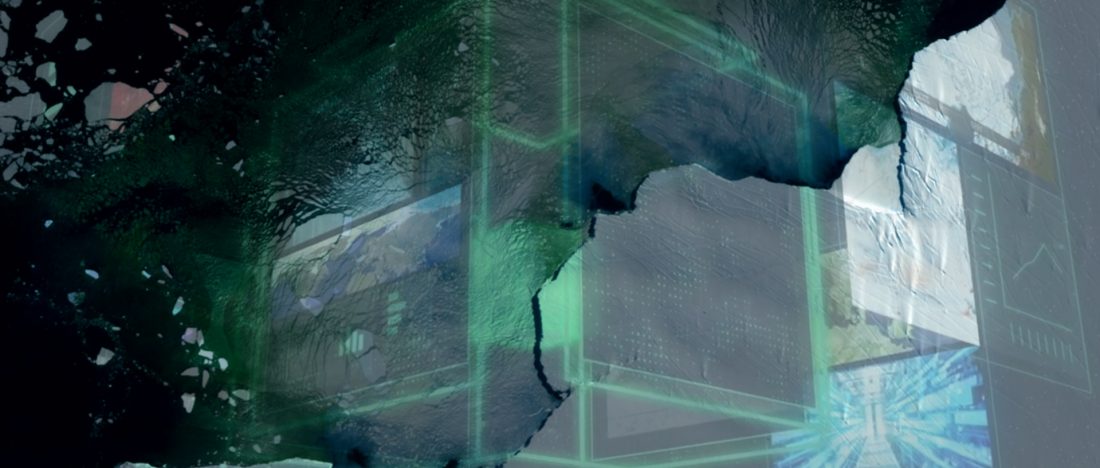In September 2021, Sinergise and Polar View started a collaboration to expand the capabilities of the Polar Thematic Exploitation Platform (Polar TEP).
ESA has sponsored a series of seven TEPs on different subjects to provide insight into how our oceans, atmosphere, land and ice operate and interact as part of an interconnected earth system by exploiting the unprecedented flow of high-quality global data on the state of our planet, combined with long-term EO archives, in-situ networks and models. Polar TEP was developed to address the particular needs of the polar community. Researchers use Polar TEP to develop processing algorithms online, with all the processing done in the cloud, eliminating the need for people to download data to their computers, install software, and wait while their computer copes with the processing load. Polar TEP provides data access, analysis tools, an interactive development environment, computational resources, machine learning capabilities, and collaborative workspaces.
The first version of Polar TEP was designed over seven years ago and has been operational for four years. To stay current with the latest advancements in the use of earth observation data and to meet the growing requirements of the polar community, the capabilities of Polar TEP needed to be updated and expanded.
A logical evolution was a transition to the use of the state-of-the-art Euro Data Cube (EDC) for the underlying infrastructure, for several reasons: the flexibility and scalability of the EDC allow for easy (and interactive) prototyping, then running the process on a continental scale; there are also numerous existing data collections and features, which are useful for Polar TEP, such as global archive of Sentinel and Landsat analysis ready data, Copernicus services, multi-temporal processing and data fusion. Last but not least, by deploying Polar TEP algorithms to EDC, these become available to other users as well, who can build on top of them, growing the uptake.
The new approach will dramatically expand the functionalities available to the Polar TEP user community and bring new users to the EDC while lowering the cost of Polar TEP operations. This will also serve as an example of how thematic exploitation platforms can benefit from the operational services, creating white-label solutions on top of them.
Two use cases have been demonstrated to date, to show the new capabilities. The first is implementing an operational service to automatically determine the floe edge the boundary between immobile sea ice attached to the shore and mobile sea ice on the ocean. This information is of vital importance to Indigenous peoples in the Arctic who use the sea ice to travel and hunt.

The second use case is implementing an operational service to automatically determine the albedo of the Greenland ice sheet – information used in climate change and weather predictions.

The two use cases are already demonstrating the benefits of the new Polar TEP:
- The efficiency of data processing has been improved using the tools that are natively available within the Polar TEP environment.
- The processing chains are now easily scaled from regional trials to operational services over the large polar regions.
- The use case results can now be better visualized.
Beyond the capabilities brought by EDC, Polar TEP is being augmented in other ways. Polar TEP is working with EOPORT to bring near-real-time data to the Polar TEP community. This will reduce the latency of satellite image availability from three hours to a couple of minutes, which will have significant benefits in safety-of-life applications.
Polar TEP is working with the Arctic University of Norway and Spire Global to provide sea ice thickness products based on Cryosat, Sentinel 3, and grazing angle GNSS-R observations.
Polar TEP is also working with ESA to ensure that the outputs from the wide variety of ESA polar projects will be available through the platform.

